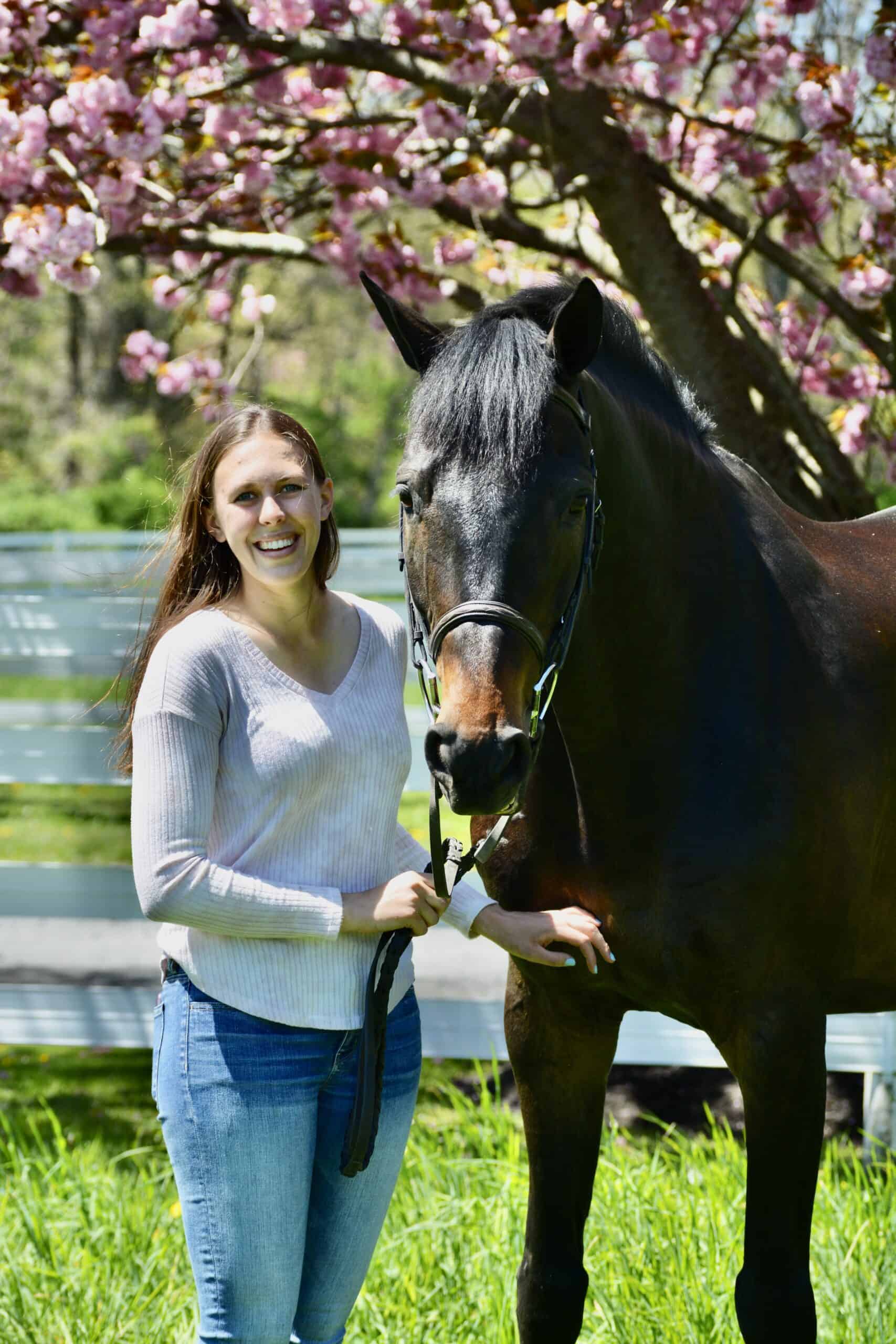Rehabilitating a Horse Out of Back Pain

Clayton explained that one of the first steps in the rehabilitation process is activating the deep stabilizing muscles. “The exercises I really like (for this) are the dynamic mobilization exercises, or baited stretches,” she said. “The principle here is that the horse is taught to follow a treat with his nose, and that allows the handler to put the head and neck into several positions. This not only improves spinal mobility but also challenges the horse’s balance in different positions.”
She described a series of rounding exercises, including chin to chest, chin between carpi (knees), and chin between fetlocks, and lateral bending exercises, including chin to girth, chin to stifle, and chin to hind fetlock. “The lower or further back the horse goes in these stretches, then the more the angle of the poll opens, and the more the angle at the base of the neck flexes or bends,” Clayton added. Performing baited stretches three days per week with five repetitions of each stretch per day increases the size of the deep stabilizing spinal muscles and improves their symmetry on the left to right sides within six weeks, said Clayton.
She also noted that although she encourages the use of slow feeders, owners should avoid haynets and other elevated methods of feeding. Rather, use slow feeders that ask the horse to keep the head and neck in a lowered position.
Owners and trainers can increase stabilization through exercises that displace the center of mass relative to the horse’s base of support, which elicits a stabilizing response in the muscles. These exercises include:
- Gently pulling the tail to the side to activate the stabilizers of the hip and stifle.
- Reducing the size of the base of support by picking up a leg then gently pushing the horse’s body
- Standing the horse on unstable surfaces.
- Destabilizing the horse’s balance by changing limb motion during the swing phase with pole exercises.
“The goal is to encourage the horse to engage his spinal and limb stabilizing muscles,” said Clayton.
“Many of the exercises for rehabilitating back pain can be done at the halt or walk, but we eventually reach a point where it’s necessary to introduce the trot and possibly the canter into the rehab program.” We then must ask ourselves, ‘Which is the lesser of the two evils? Circling on the longe, or adding the weight of the rider?’”
When introducing longeing to the rehabilitation program, it is best to start with a large circle and slow speed. The horse should be allowed to lean inward on the circle to generate the turning ground reaction force, Clayton said.
“The rider’s weight increases lumbosacral joint flexion in stance and in motion,” she explained. “As a result, the horse’s back slopes downward in front of the croup. The amount of thoracolumbar hollowing is directly proportional to the weight of the rider, so it makes sense to start with a small, lightweight rider.”
As the horse progresses in his rehabilitation, exercises should be added to build strength and coordination and activate the mobilizing muscles of the core. Hillwork can be introduced slowly, first at the walk, then at the trot and canter. On an incline, the effect of gravity loads the hind limbs, strengthens the long back muscles, gluteals, and hamstrings, and activates the internal abdominal obliques to stabilize the trunk. On a decline, gravity loads the forelimbs more than on the flat, which increases the risk of concussive injuries. Clayton recommends walking downhill in slow, controlled steps and, in good self-carriage, which strengthens the thoracic sling muscles and activates the external abdominal oblique muscles that control trunk rotation.

Written by:
Haylie Kerstetter
Related Articles
Stay on top of the most recent Horse Health news with















